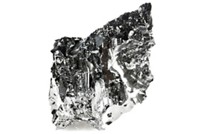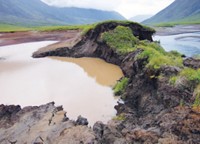Advertisement
Grab your lab coat. Let's get started
Welcome!
Welcome!
Create an account below to get 6 C&EN articles per month, receive newsletters and more - all free.
It seems this is your first time logging in online. Please enter the following information to continue.
As an ACS member you automatically get access to this site. All we need is few more details to create your reading experience.
Not you? Sign in with a different account.
Not you? Sign in with a different account.
ERROR 1
ERROR 1
ERROR 2
ERROR 2
ERROR 2
ERROR 2
ERROR 2
Password and Confirm password must match.
If you have an ACS member number, please enter it here so we can link this account to your membership. (optional)
ERROR 2
ACS values your privacy. By submitting your information, you are gaining access to C&EN and subscribing to our weekly newsletter. We use the information you provide to make your reading experience better, and we will never sell your data to third party members.
Environment
Amount Of Mercury In Oceans Rises
by Cheryl Hogue
August 11, 2014
| A version of this story appeared in
Volume 92, Issue 32
Surface waters of the world’s oceans contain nearly three times as much mercury as they did at the start of the Industrial Revolution, says a team of international researchers. The team, led by marine chemist Carl H. Lamborg of Woods Hole Oceanographic Institution, analyzed water samples collected at various depths from the Atlantic, Pacific, Southern, and Arctic oceans. The researchers report that ocean waters shallower than 1,000 meters deep show a 2.6 times increase in their amount of mercury since preindustrial times (Nature 2014, DOI: 10.1038/nature13563). Over the same time, the quantity of mercury in the world’s oceans as a whole has doubled, they report. They suggest follow-up studies to determine the extent to which methyl mercury concentrations in fish have changed since the rise of industrialization and might change in the future given that mercury releases caused by human activities continue to grow. The widespread burning of coal, which contains trace levels of mercury, is largely responsible for the increasing emissions of the neurotoxic metal. Mining operations also release mercury.





Join the conversation
Contact the reporter
Submit a Letter to the Editor for publication
Engage with us on Twitter